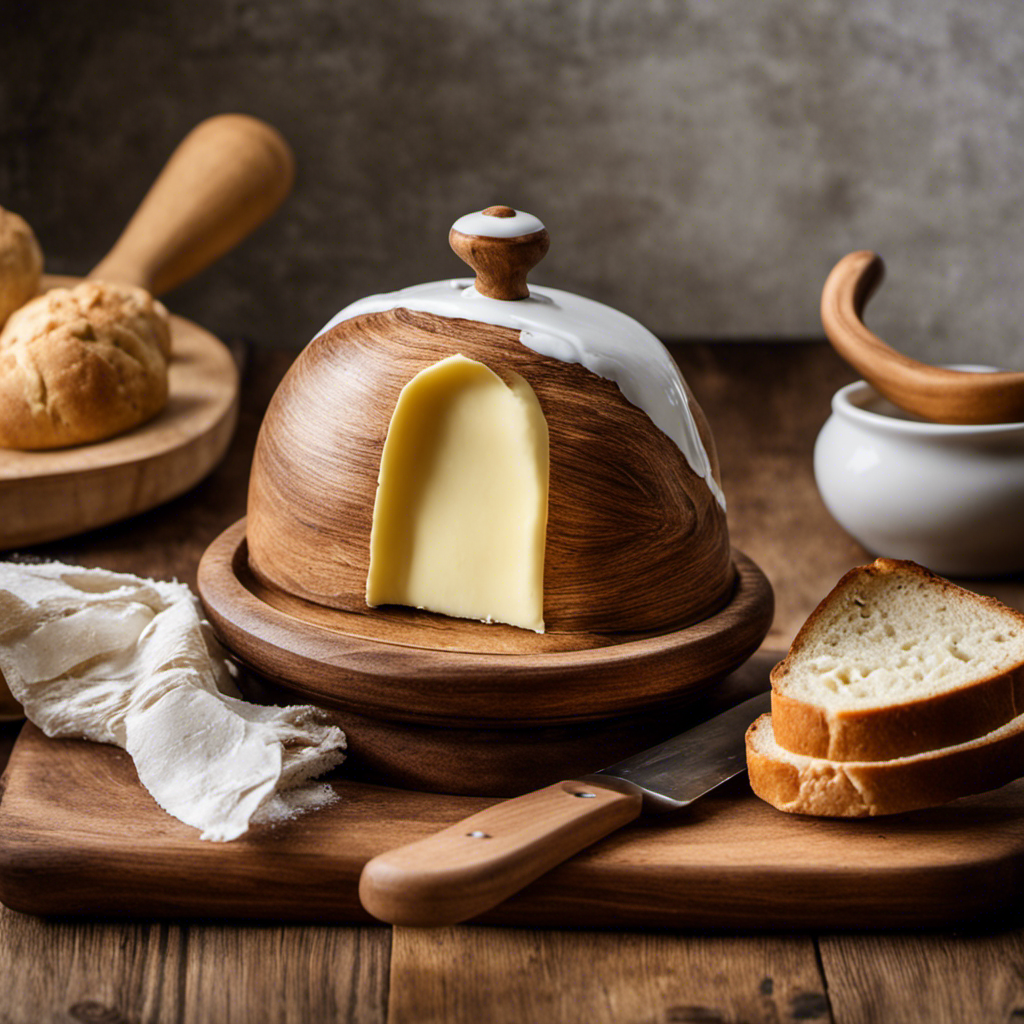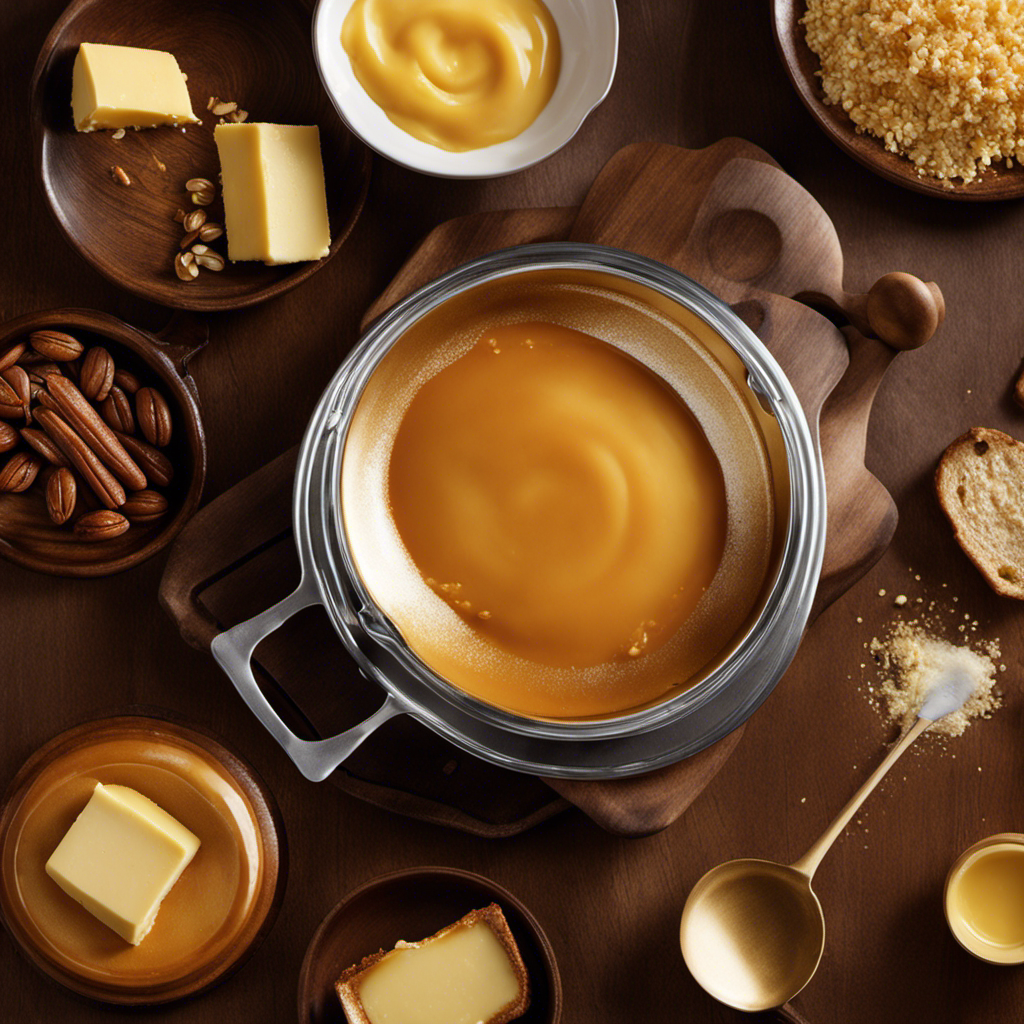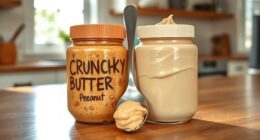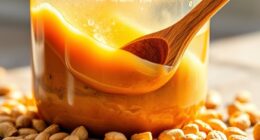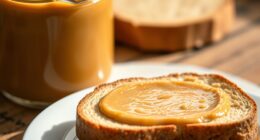Butter is a rich dairy product, primarily made up of about 80% fat, with the rest consisting of water and milk solids. This high fat content gives it a creamy texture and enhances its flavor, making it a staple in many recipes. You’ll find various types, like salted and unsalted, each offering unique culinary benefits. Discover how factors like cow diet and churn method can influence butter’s taste and quality as you explore further.
Key Takeaways
- Butter is a dairy product made from churning cream separated from milk, resulting in a rich and flavorful spread.
- It typically contains about 80% fat, with the remainder being water and milk solids, contributing to its texture and flavor.
- The high fat content in butter is crucial for its culinary properties, influencing how it behaves in cooking and baking.
- Different types of butter, such as salted, unsalted, and cultured, vary in flavor and fat content, impacting their culinary uses.
- The quality of butter is affected by factors like cow diet, cream quality, and production methods, which all influence its final taste.
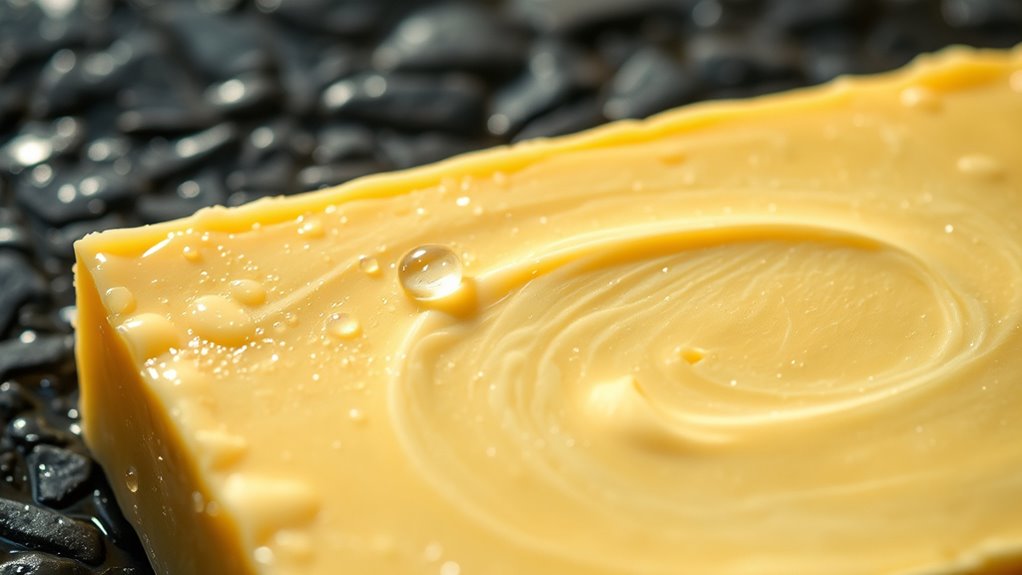
Have you ever wondered what really goes into that creamy spread you slather on your toast? Butter, a staple in many kitchens, comes from the fascinating process of dairy production. It’s not just about cream; there’s a whole world of science and art behind creating the perfect butter. When you take that first bite, you’re experiencing the result of careful processes that transform raw milk into a rich, flavorful product.
To start, butter is primarily made from cream, which is separated from milk. This cream is then churned to create butter, a process that not only incorporates air but also breaks down the fat globules, allowing the butter to come together. The key component here is fat; butter typically contains around 80% fat, with the remaining percentage made up of water and milk solids. This high fat content gives butter its distinctive texture and flavor, making it an essential ingredient in countless recipes.
When you think of butter varieties, you’re likely aware of some common options like salted and unsalted butter. However, there’s much more to explore. For example, European-style butter has a higher fat content and is often cultured, giving it a tangy flavor that many chefs prefer. Then there’s clarified butter, which has the milk solids removed and is ideal for high-heat cooking. Each butter variety brings its unique qualities to the table, enhancing everything from baked goods to savory dishes.
The quality of the cream used in dairy production also plays a crucial role in the taste of the butter. Grass-fed cows produce cream that is richer and more flavorful than grain-fed counterparts, making a noticeable difference in the final product. As you experiment with different butter varieties, you might notice how the flavor can change based on the cow’s diet, the region where it’s produced, and the method of churning.
Frequently Asked Questions
Can Butter Be Used in Vegan Cooking?
Butter isn’t vegan, but you can definitely use vegan alternatives in your cooking. Plant-based spreads, like coconut oil, almond butter, or vegan margarine, work great in recipes that call for butter. They provide similar textures and flavors while keeping your dishes cruelty-free. Experiment with different plant-based options to find the ones that suit your taste. You’ll be surprised at how versatile vegan cooking can be!
How Should Butter Be Stored for Freshness?
To keep butter as fresh as a spring morning, store it in an airtight container or wrap it tightly in parchment paper. For ideal shelf life, keep it in the fridge, where it can last up to a month. If you’ve got more than you’ll use, consider freezing it. Just slice it into smaller portions, so you can thaw only what you need. Follow these storage tips, and your butter will stay delightful!
Is Clarified Butter Different From Regular Butter?
Yes, clarified butter is different from regular butter. When you clarify butter, you remove water and milk solids, leaving behind pure fat. This process enhances the butter flavor and gives you a higher smoke point, making it ideal for cooking at high temperatures. It’s a popular choice in many cuisines, especially in dishes that require dairy derivatives without the risk of burning. So, you get a rich taste without the lactose!
What Are Common Substitutes for Butter in Recipes?
When you’re looking to swap butter, consider vegan butter or dairy-free alternatives, like coconut oil or applesauce. While traditional butter brings richness, these substitutes offer unique flavors and textures. Vegan butter mimics that creamy consistency, while coconut oil can add a tropical twist. Applesauce, on the other hand, provides moisture and sweetness for baked goods. Each option gives your recipes a different character, letting you explore and enjoy diverse culinary experiences.
Does Butter Contain Lactose?
Yes, butter does contain lactose, but in smaller amounts compared to other dairy products. If you’re lactose intolerant, you might tolerate butter better than milk or cheese. However, if you have a dairy allergy, even small lactose content can cause issues, so it’s best to avoid it altogether. There are lactose-free alternatives available if you need to steer clear of lactose while still enjoying buttery flavors in your cooking.
Conclusion
In essence, butter is a creamy delight made primarily of fat and water, bringing richness to your favorite dishes. Its unique composition not only enhances flavor but also creates a luxurious texture that can elevate even the most basic of meals to culinary masterpieces. So, next time you slather it on toast or melt it into a sauce, remember you’re indulging in a golden treasure that transforms the ordinary into something truly extraordinary.





